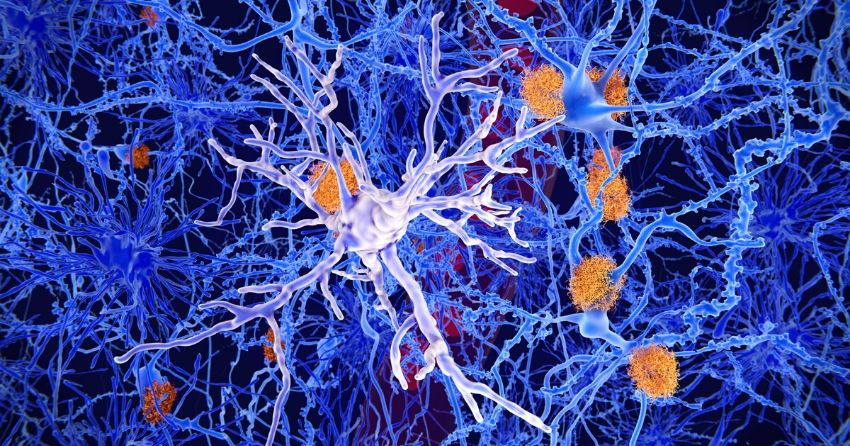Novel Gene Drives Amyloid Plaque Development in Alzheimer's Disease

-
A newly discovered gene, RBFOX1, drives the initial appearance of amyloid plaques in the brain, which is a marker of Alzheimer's disease (AD); they start accumulating 10 to 15 years before AD is diagnosed.
-
RBFOX1 may also contribute to an early breakdown of neural connections.
-
Targeting people with increased expression of this gene may be able to correct amyloid plaque accumulation before AD develops or progresses.
This article was posted on Columbia University Irving Medical Center News:
A newly discovered Alzheimer's gene may drive the first appearance of amyloid plaques in the brain, according to a study led by researchers at Columbia University Irving Medical Center.
Some variants of the gene, RBFOX1, appear to increase the concentration of protein fragments that make up these plaques and may contribute to the breakdown of critical connections between neurons, another early sign of the disease.
The finding could lead to new therapies that prevent Alzheimer's and better ways of identifying people with the greatest risk of developing the disease.
BackgroundIn recent years, amyloid PET brain imaging has helped to reveal that the earliest signs of Alzheimer's disease -- deposits of amyloid in the brain - appear as early as 10 or 15 years before any symptoms of the disease become apparent.
But aside from the few cases caused by rare, inherited genes, researchers have been searching for the cause of excessive accumulation of amyloid in the brain of Alzheimer's patients.
To find genes that drive EARLY amyloid accumulation, the new study examined the genomes of thousands of people whose PET images revealed amyloid deposits in the brain but who had not yet developed Alzheimer's symptoms.
"By studying people with the earliest signs of Alzheimer's, we can find genes that are unequivocally related to the start of disease. And these genes are more likely to lead to therapies that can prevent the disease from developing," says Richard Mayeux, MD, chair of neurology at Columbia University Vagelos College of Physicians and Surgeons, who led the study.
What's NewThe study looked through the genomes of nearly 4,300 people who did not have Alzheimer's but whose brains already contained variable amounts of amyloid plaque, as measured by PET imaging using amyloid tracers.
A genetic analysis uncovered a link between the appearance of amyloid deposits and APOE, a known Alzheimer's gene, and a novel gene, RBFOX1.
About 10% of people in the study (predominantly with European ancestry) had RBFOX1 variants that were linked with the emergence of amyloid deposition.
Lower amounts of RBFOX1 in the brain appeared to be associated with increased amyloid and global cognitive decline during life.
Why It Matters
Uncovering exactly how RBFOX1 regulates amyloid plaque could lead to ways to prevent plaque accumulation. Previous research has already suggested RBFOX1 is involved in the formation of amyloid precursors and the breakdown of synapses between neurons.
The connection between RBFOX1 and amyloid plaques may be relatively easy to untangle, unlike the well-known connection between APOE4 and amyloid, which is still not understood after decades of research.
"I think we're going to find that these markers of eventual disease are where real progress can be made against Alzheimer's," Mayeux says. "It will be virtually impossible to change the disease course at the time symptoms appear. By then, the disease has already flourished for 10 to 15 years."
"If we can target the genes that get amyloid started -- and correct those problems somehow -- we may be able to prevent the disease."This study was published in JAMA Neurology in June 2020.





